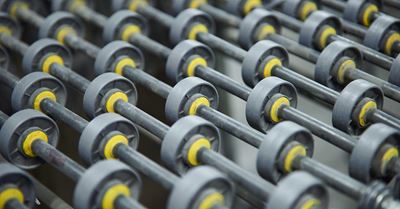Powered Conveyors vs Gravity Conveyors: Which Do You Need?

How do you know what type of conveyor system you need? To start, you’ll need to understand the primary categories of conveyors and the key differences between them.
Conveyors can greatly increase productivity within many material handling operations, and basic systems can be relatively inexpensive when compared to other types of automation. Conveyors can be classified into two broad categories, gravity systems or powered systems.
How do you know what type of system you need? To start, you’ll need to understand the primary categories of conveyors and the key differences between them.
Gravity Conveyor Systems
Gravity systems are powered either by gravity (items sliding down a slope) or by human assistance (workers pushing an item along a conveyor line). These systems are simple, inexpensive, and can be very effective, depending on the application.
There are a few different styles of gravity conveyors, but the common denominator among them is that they operate without electricity, combustion or other means of power.
Gravity Roller Conveyors
Gravity roller systems are ideal for heavy items, such as large totes, lumber, drums or other substantial goods. These systems use tube-shaped rollers mounted on individual axles that are perpendicular to the sides of a steel or aluminum conveyor frame. As materials move along the conveyor, the rollers spin, allowing products to move freely with the just force of gravity or human assistance. The roller axles are typically spring-mounted to allow for some flexibility of the conveyor.
Gravity Skatewheel Conveyors
The concept of skatewheel conveyors is very similar to that of gravity roller systems, but instead of cylindrical rollers these systems use a series of axle-mounted, tightly clustered wheels that each turn independently. They’re generally used for lighter weight items, and are very popular across many different industries.
Chute Conveyors
Perhaps the simplest gravity conveyor, a chute operates much like a playground slide: items slide down a low friction surface, from the high end of a slope to the low end.
Powered Conveyor Systems
As the name suggests, powered conveyor systems use power to propel goods along a conveyor line. Powered systems generally utilize electric motors connected to rollers or belts.
Power Roller Conveyors
Power roller conveyors are almost identical to gravity rollers with one exception: they use electric motors to spin the rollers. That said, powered roller systems vary widely in capacity and speed. Rollers can be connected to motors via a belt, a lineshaft, or a chain and sprocket mechanism. Each has its own advantages and disadvantages, but powered roller systems can all move items without the assistance of gravity or humans.
Power Belt Conveyors
Most of us are familiar with conveyor belts in our everyday lives. You may see them at a supermarket checkout stand, at a sushi restaurant or at an airport baggage claim. Using an external electric motor and pulley system, these conveyor systems move items on a wide, flat belt over supports between the two sides of the conveyor frame. The supports are usually a smooth, flat surface or rollers.
Which Conveyor Is Best For My Application?
Movement: The first thing you need to consider when deciding between a gravity and powered conveyor system is how and where your products need to move. Will all conveyor runs be descending or flat? If so, you may be able to use a gravity system. Any ascent, however, must be handled by a powered system.
What about speed? If you need everything to travel at a consistent rate, or you need to maintain a specific transfer rate, powered conveyors are the answer. If it doesn’t matter, you may be able to use a gravity system.
Similarly, do you need to prevent items from accumulating? If so, you’re going to need a powered system, since items will slow or stop at the bottom of a gravity run.
Length: Gravity conveyors are mostly suitable for short runs. Maintaining a slope over a long distance is often difficult in an industrial environment, so powered conveyors must be used when items have to travel longer distances.
Cost: In general, powered systems are more expensive than gravity systems, and design and installation can be more complex because of power accommodations. In addition, maintenance can be more costly for powered conveyors because there are more moving parts.
|
Gravity System |
Power System |
|
|
Speed |
Consistent |
Variable |
|
Slope |
Decline or Flat |
Incline, Decline, Flat |
|
Spacing |
Items Accumulate |
Even Spacing |
|
Range |
Short |
Mid to Long |
|
Pricing |
Lower |
Higher |
Conveyor System Design
If you need assistance with designing a conveyor system for your operation, get in touch with an automation expert at Raymond West today. They can help you select between gravity systems, powered systems or some combination thereof.

